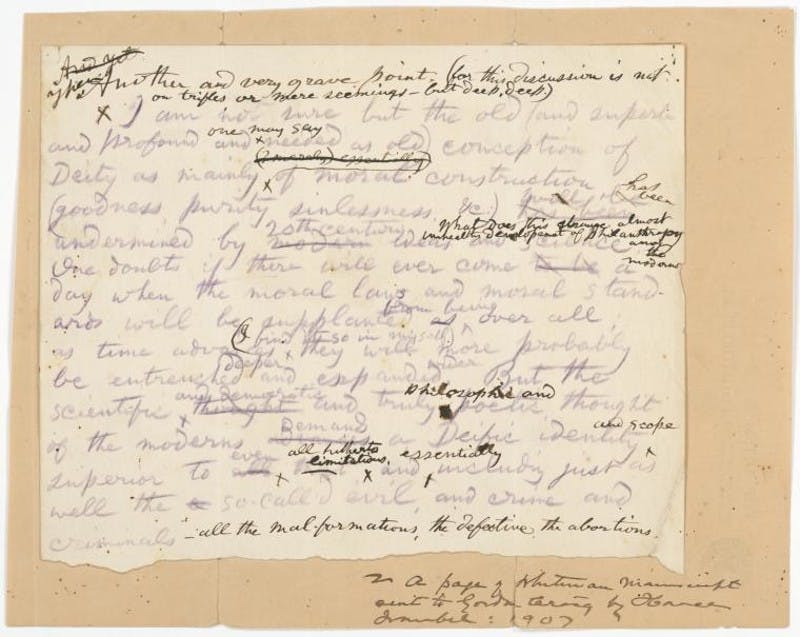Calling someone—or oneself—an idealist is not always a compliment. It suggests impracticality, or a certain detachment from reality; it suggests a propensity to dream. The tech industry is rife with idealism, for better or worse; it has always been this way. Early programmers and technologists saw a world in which technology could be a great leveler, a tool to mitigate inequality and oppression while fostering creativity and connection. In the current startup universe, there’s still a lot of chatter about changing the world, an objective that has become so cliché—and ridiculed—that it’s easy to forget that those voicing this desire genuinely, vehemently believe it. From the outside, the prospect of a world-changing software product is either very exciting or completely delusional, depending on who’s talking.
What is often absent from the conversation about world-changing technologies is whether these technologies will actually create a world that people want to inhabit. This can be especially unnerving in cases where there’s evidence of an expanding distance between the world and those who actively pursue its alteration. When the rhetoric of technological idealism is co-opted by capitalism—by companies offering, say, networked home appliances or behavior-tracking programs or communications software—its original sister concerns, like ethics and morality, can get left behind.
Idealism about technology as a democratizing force currently looks a lot like defense: protecting digital civil liberties, and fighting against further erosion. This is the side that Justin Peters is most committed to documenting in his book The Idealist: Aaron Swartz and the Rise of Free Culture on the Internet, a partial biography of the late activist and Open Access advocate. It’s bittersweet that the book is more interested in the past than in the present and future, as there have been a number of cases in the last few years that readers might be interested in, such as “Blurred Lines” vs. Marvin Gaye (Robin Thicke and Pharrell Williams were ordered to pay $4.7 million to Gaye’s family last spring), or journalist Matthew Keys’s entanglement with Anonymous and the Los Angeles Times. Another omission, this one strange, is that of one of the biggest players in this field: the Electronic Frontier Foundation.
It also bears mentioning that the political dimension of free culture can obscure some of the inquisitiveness, creativity, and whimsy that characterize the movement, on both grassroots and institutional levels. Last week, the New York Public Library added 180,000 public-domain images, maps, photographs, documents and pieces of ephemera to its digital collection; among other things, there’s a robust archive of historical menus. The Public Domain Review is an online publication providing “an ever-growing cabinet of curiosities for the digital age, a kind of hyperlinked Wunderkammer.” And in another corner of the Internet, Parker Higgins, an activist with the EFF, runs a side project dedicated solely to unlocking a collection of over 7,500 high-quality scans of historical, pomological watercolors held by the United States Department of Agriculture. Recently, I filed a request with the USDA, for a watercolor of a pomegranate. I have to say, it’s beautiful.

One of the best qualities of The Idealist is that the book is hardly about Aaron Swartz’s life at all. Those looking for an intimate narrative of his life would do well to look elsewhere, as this is not a definitive biography, nor does it aspire to be as much. The Idealist does not shed new light on Swartz’s life or death; what it does—and does very well—is put Swartz’s work in context. The book gives an engaging, if knowingly incomplete, account of the history of intellectual property and copyright law, the archaic roots (and current implications) of cyberlaw, and some key players in the ongoing fight between open-data philosophy and the federal government.
Copyright law has always been tangled and contentious, even before the advent of the World Wide Web. “American copyright law is a product of morality and metaphor,” Peters writes, and this is very much true. This comment comes as part of an exploration into the extension of copyright terms, and its motivating forces (e.g. Disney; the Recording Industry Association of America; the Motion Picture Association of America). This might sound a little stuffy at first glance, but Peters digs into the court records to surface great exclamations, both moral and metaphorical, from both sides, and handles the material with ease. He manages to animate even the Copyright Term Extension Act (CTEA) and the Digital Millennium Copyright Act (DMCA), lightening legalese with compressed clarity and knowing winks at the reader. Of the argument by Dr. Seuss Enterprises that extended copyright terms were necessary for “progress and creative expression,” Peters dryly notes, “Without them, Americans would never have known the pleasures of Seuss Landing, a $100 million children’s theme park built at Universal Studios Orlando.”
The last third of The Idealist looks more closely at Swartz’s projects and collaborators, culminating in an account of the events leading to his 2011 indictment, and the case’s subsequent escalation. (Swartz was found downloading a large number of academic articles from JSTOR, many of which had been federally funded and a great number of which were also in the public domain, using the public network at the Massachusetts Institute of Technology.) These pages shift their focus from copyright law to cyberlaw; they are gut-wrenching. In late 2012, Swartz faced 13 felony charges, which carried a maximum sentence of decades in prison—a fact the prosecutors touted in an effort to use the case as a public example. In practice Swartz would have likely faced a much shorter sentence if convicted, but the symbolic weight of the maximum length was resonant. Almost all of these charges were brought under the Computer Fraud and Abuse Act (CFAA), which first passed in 1984 and, over thirty years later, still looks a lot like the original. The CFAA is broad and archaic; its reach and malleability should concern anyone in this country who uses a computer. As Peters notes, “the CFAA’s imprecision gives prosecutors the latitude to hang felony charges on unlikely defendants.” It’s a perfect example of how quickly technology moves, and how slow—and unwilling—our legal system and judicial process are to catch up.
“Aaron Swartz has become an avatar for a movement,” Peters writes early on, and it’s true: Swartz’s indictment galvanized activists, just as his death introduced a broader audience to his life’s work. In a way, Aaron Swartz is an avatar for this book, as well – after the introduction, 100-plus pages pass without mention of his name. While the final third focuses on Swartz’s life, the narrative of the online free culture movement isn’t just about him: it’s about librarians and academics, hackers and artists, along with iconoclasts like Stewart Brand (inventor of the Whole Earth Catalog) and Michael Hart (inventor of the e-book), and infuriatingly principled (but not necessarily wrong) technologists like Richard Stallman. More than anything, it’s about the ideological underpinnings of knowledge production and cultural creation, and a fierce belief in the commons.
For a few months in 2013, I worked for a young startup determined to build an app for voracious readers: “Like Netflix,” I would try not to say, “but for e-books.” When I joined, the company was small—just the three founders, an engineer, and me—but it had a straightforward vision and several million dollars in funding from top-tier venture capitalists. One of my favorite projects was downloading text files from a website called Project Gutenberg, which was a free digital library, albeit a small one: every title in its collection was in the public domain. I downloaded the books, which were classics like Moby-Dick and Pride and Prejudice; our designer created new covers, branded with our logo (like Penguin Classics, but for startups); and into the app they went.
Did downloading free work, repackaging it, and including it in a paid product owned by a VC-backed, private company feel dirty? Not really; not at all. Public-domain work is constantly repackaged and placed behind paywalls. Any college bookstore is testament to how lucrative this can be. Reuse takes many shapes: in 2009, writer Seth Grahame-Smith published Pride and Prejudice and Zombies, splicing the original text with zombie gore, and crediting Jane Austen as a co-author. The book became a New York Times Bestseller.

Pride and Prejudice remains in the public domain, and the raw content is still free in its purest and cheapest form (the text file), on the world’s most powerful distribution platform (the Internet). This isn’t because “information wants to be free,” as Stewart Brand famously stated; information doesn’t want anything. The public domain is robust because people on the Internet—in this case, Project Gutenberg’s volunteer corps, led by the late Hart—willed this freedom into being.
The free culture movement is seen as a digital phenomenon, which can sometimes undercut its deeply human concerns. The Idealist is a reminder of those who originally envisioned technology (specifically, the World Wide Web) as an antidote to privatization, capitalism, and inequality; it is a reminder of how far the enterprise has drifted. Peters writes that Swartz’s legacy is his view that “the only way that the world ever improved was by allowing people to open things up.” For those who hold out hope for a world in which there are fewer barriers to what Swartz called “the world’s entire scientific and cultural heritage”—for an improved world—it is also a reminder of how much work there is to be done.
